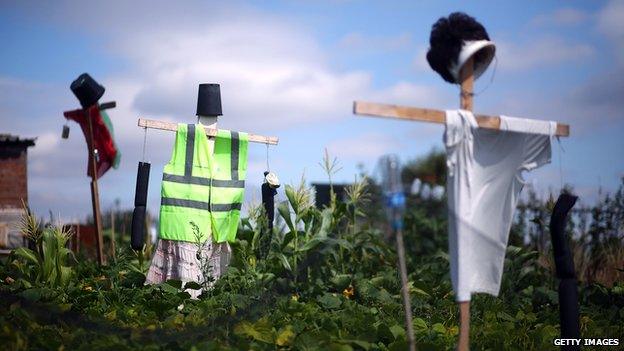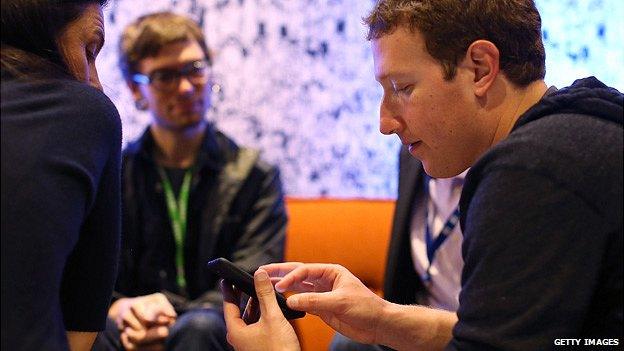How to market your app yourself and take it front page
- Published

Do it yourself: Having a PR firm on retainer can set you back upwards of £3,000 a month - unthinkable for the smallest start-ups. Don't panic. There's a lot you can do for yourself
You've had an idea. It's a brilliant, bound-to-make a million idea for an app.
During those long cold days spent at the allotment, tending your prize turnips, you considered how lonely the life of a turnip fancier can be.
If only there was a way to meet like-minded souls, perhaps when you were out and about?
And so is born your marvellous app idea. You will harness the power of social networking and location to let turnip fanciers the world over find other kindred spirits, and come together to talk turnip, in the form of a smartphone app.
Fast forward several months and having found a root vegetable loving developer and designer at the annual TurnipCon, it's ready to ship. This is your moment. Your love letter to the turnip community is ready.
Well, almost.
Shameless self-promotion
The days when a nifty idea, a few good reviews and a pretty icon for the app store were all you needed to take your app to Angry Birds status are long gone.
There are more than 800,000 apps currently on sale, external on both the iTunes App Store (for iOS) and the Google Play store, the two biggest marketplaces.
It's estimated that 56bn smartphone apps will be downloaded in 2013, external. Yet overall, just 25 developers share 50% of app revenues, external, with 1 in 4 apps downloaded, used once and discarded, external. 67% of developers earn less than $500 a month, external from their apps.
One way to try and set it apart is to get your app in front of influential eyeballs - bloggers and journalists.

Stand up and be counted: Making your app stand out from the crowd in a saturated market is difficult but not impossible
Don't panic. You won't need to sell the rights to your allotment to fund an expensive PR campaign quite yet.
There's a lot you can do yourself, thanks to the access the internet, email and social media can provide.
Erica Sadun is a developer, author and blogger for The Unofficial Apple Weblog, or TUAW, external.
Like many bloggers and journalists, she is inundated with pitches and press releases every day. So with a colleague, Steve Sande, she has written a book, external to help app creators to pitch to the right people in the right way.
"You don't have to be an expert in human relations to do this," she says.
"All you have to do is follow a pattern of explaining what it is, why it's important, why you're motivated to create this and what people will find exciting about it."
Marketing must be considered before the first line of code is laid down, according to Ms Sadun.
"Most small independent developers will spend 95% of their time developing and debugging and the remaining 5% will be on administrative stuff.
"But they don't really spend much if any time thinking about marketing, thinking about sales, thinking about bringing the product to market because for them it's a creative effort, not necessarily a business effort."
Sylvain Gauchet, founder of start-up video specialists Apptamin agrees.
"You need to start thinking about your marketing way before you launch, from the moment you get the idea, you need to start testing the waters, having beta testers that are going to help you spread the word, or at least give you valuable feedback so you can improve your app."
Mr Gauchet blogs regularly, external on the subject.
"Four years ago, you could release an OK app, and maybe it would do well, but now it's getting very hard," he says.
"You need to get all the chances on your side and create a great app from the start - even if it's very simple, it needs to be well polished."
First things first
The first thing to do is inventory your app. Consider who your audience is and why they would want to buy it.
Start using social media and your existing networks.
"Friends, family, associates, your lawyers, accountants, service providers, anyone must download it, use it and review it," says Tony Mangan of Magnum PR.

Bryce Keane says small start-ups should be wary of PR companies promising the earth
"Get advice on PR and marketing and make contacts with advertisers, PRs, marketers who might be willing to help for nothing initially, at least with giving advice, and then for a discounted fee for a while."
Local tech hubs can be good hunting grounds for expert advice.
Bryce Keane is one of the founders of 3Beards, a company that organises networking events and pitch nights for London's tech community, as well as running his own PR company, Albion Drive.
"It doesn't make sense for you to go to an agency till you hit the point where your market traction and customer acquisition means it no longer makes sense for you to spend time trying to do everything, and you need to outsource it," he says.
"That's the critical tipping point and where PR agencies have the most strategic value ... early stage there's a ton of things you can do yourselves."
Be specific
The next step, according to Erica Sadun, is to do your research.
"I can't tell you how many times we get pitches for products we don't cover, technologies we don't cover. People have a scatter-shot approach in pitching. They figure if I send it out to absolutely everybody, somebody is going to bite.
"What they don't realise is the more general that they make it, the chances are actually reduced in finding an interest."
Find the journalists and bloggers that have reviewed similar apps in the past. Read their work, and personalise your pitch accordingly.

ABI Research estimates that apps will generate revenues of $25 billion in 2013; $16.4 billion will come from smartphone apps and $8.8 billion from tablet apps
"I would try to find an interesting angle to my story and something that's unique about my product," suggests Sylvain Gauchet.
Tony Mangan agrees.
"Looking at media and bloggers in particular, what can you give them or their readers that they would possibly need, amid hundreds or even thousands of other pitches and apps from other developers?
"Test your pitch with the "so what?" question. If you can't answer that convincingly then you don't stand a chance. It's incredibly competitive out there."
Find contact details online - Twitter is a good starting place, and for journalists sites like Muck Rack, external and Journalisted, external are useful.
"Contacting journalists has never been more accessible," says Bryce Keane.
"If all else fails you can call the switchboard and ask to speak to them."
Check it off
To create your email pitch, Erica Sadun has created a simple checklist of what a blogger looks for to write a post.

Facebook founder Mark Zuckerberg: The social network's app is the most popular in the US with 76% of smartphone owners using it
The title should tell people what it is and why it's worth considering. If that fails to intrigue them your carefully crafted pitch may never be read. A promo code to let them download the app is also important - they can be tracked using services like Tokens, external.
One element you might not have have considered including video.
"If you have a video that can show us [the app] in 30 seconds, it gives us a really great overview. It just does more than a screenshot will ever do." she says.
Using software like Reflector for iOS, external lets you video your app being put through its paces - although for your website you probably want a more professionally produced video.
With a little luck and a lot of elbow grease you could secure that all important exposure.
"Get out there, talk to people," says Bryce Keane.
"Think about what you're trying to do, where you're coming from. Your story is interesting. The product is rarely the story, unless you've invented Facebook in which case good luck to you, you don't need an agency."